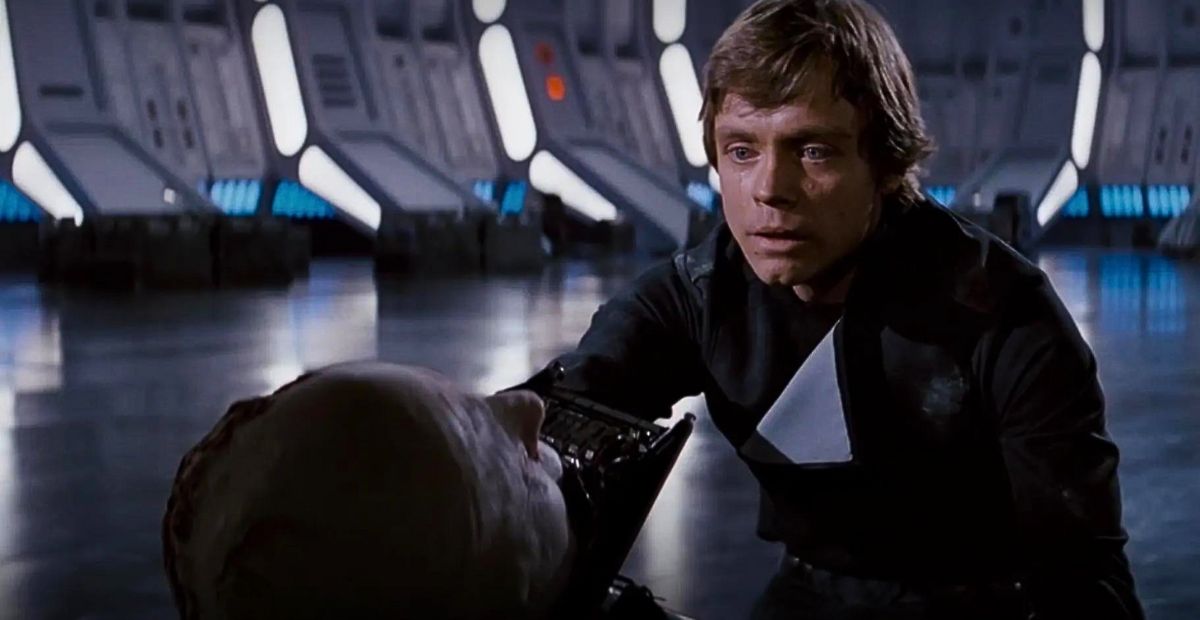I always thought Palpatine’s Force lightning is what fried Vader for good. But then I realized — what if it wasn’t the lightning, but his decision to turn back to the light side?
Vader’s whole life was powered by anger and the dark side. When he chose love over hate, did he basically unplug himself?
This blew my mind, and I had to dig deeper.
Palatine Frying His Suit
Darth Vader’s life-support suit was essential for his survival following the grievous injuries he sustained on Mustafar.
This suit, manipulated by Palpatine, was deliberately designed with vulnerabilities, particularly to Force lightning, which Palpatine could exploit to maintain control over Vader.
During the final confrontation aboard the Death Star, when Palpatine unleashes his fury of Force lightning on Vader, these vulnerabilities are catastrophically exposed.
While this assault certainly precipitates Vader’s physical decline, the true depth of his demise can only be understood by examining the spiritual journey he undergoes in his final moments.
Turning to the Light Side of the Force
In the Star Wars universe, the dark side of the Force is not just a pathway to abilities some consider to be unnatural; it is also a means to cling to life beyond ordinary means.
This aspect of the dark side can be seen in how Darth Vader and Darth Maul survived their seemingly fatal injuries.
Vader, grievously wounded and burned on Mustafar, and Maul, cut in half by Obi-Wan Kenobi, both survived incidents that should have been lethal.
The key to their survival was their intense emotions—anger, hatred, and a relentless will to live, all of which are powerful conduits for channeling the dark side’s energy.
During the final moments in Return of the Jedi, a crucial transformation occurs within Vader. Historically, his survival depended heavily on his engagement with the dark side, which fueled his life-supporting systems both physically and metaphysically.
The dark side’s energy, driven by negative emotions, acted almost as a life force that kept him going despite his severe physical debilitations.
However, as Emperor Palpatine attacks Luke with Force lightning, Vader faces a pivotal choice. Witnessing his son’s torment, the emotions driving Vader shift dramatically.
In these moments, his heart, which had long been a vessel of anger and hatred, now fills with redemption and paternal love. This emotional shift is critical as it signifies Vader’s move away from the dark side.
When Vader decides to save Luke, he is doing more than just acting against Palpatine; he is renouncing the dark side of the Force.
This renunciation means he no longer draws on the dark side’s power to sustain his own life.
Filled with new, selfless emotions, he no longer fuels his existence with hatred and rage. Instead, he embraces a purer motive—love, which the dark side cannot sustain.
At that moment, Vader chooses to let go of the dark side’s life-sustaining power, accepting that doing so means his own death.

